11 Best Black Moor Goldfish Tank Mates (With Pictures)
Black moor goldfish are not your typical goldfish.
They have lots of distinctive features that sets them apart from the traditional carp descendent fish that you can buy cheaply in your local pet store.
Instead, black moor goldfish fall in the category of ‘fancy goldfish’.
Finding a suitable tank mate for this rare breed is very important, but it doesn’t have to be too much of a challenge.
As always, when choosing a suitable tank mate, there are a number of things that you should look out for.
First of all, they must be mutually compatible in terms of energy level and general temperament. One should not cause the other undue stress or anxiety.
They must be able to thrive in the same water conditions, and ideally they should have a similar diet to make feeding time a breeze.
If the idea of all that research and heavy reading doesn’t appeal to you then don’t worry.
I’ve done all the heavy listing and have compiled a comprehensive list of the best black moor goldfish tank mates currently available on the market.
All the following fish types have been vetted for their characters, diets, water quality requirements as well as any odd perks or specific features that they might have.
Table of Contents
Other Telescope Goldfish Variants

The black moor goldfish is actually a member of the family of goldfish known as telescopes.
Their name refers to their large, protruding eyes which resemble the telescopic eyes of animals like chameleons.
Ironically, they actually have rather poor eyesight. Unsurprisingly, other members of this family of fancy goldfish make very good tank mates for the black telescope that is the subject of this article.
There are a number of specific breeds that you could choose.
For instance, members include the white telescope and the panda telescope, although other variants are available with orange and yellow coloring.
The only major difference between species is the color, so they have similar peaceful temperaments and will naturally bond well together.
The contrasting colors could also make a nice focal point for your community tank.
Like most other fancy goldfish, their distinctive feature (the eyes) is actually a result of genetic mutation and selective breeding.
So sometimes they will actually reproduce and produce normal goldfish which do not share this feature.
Celestial Goldfish
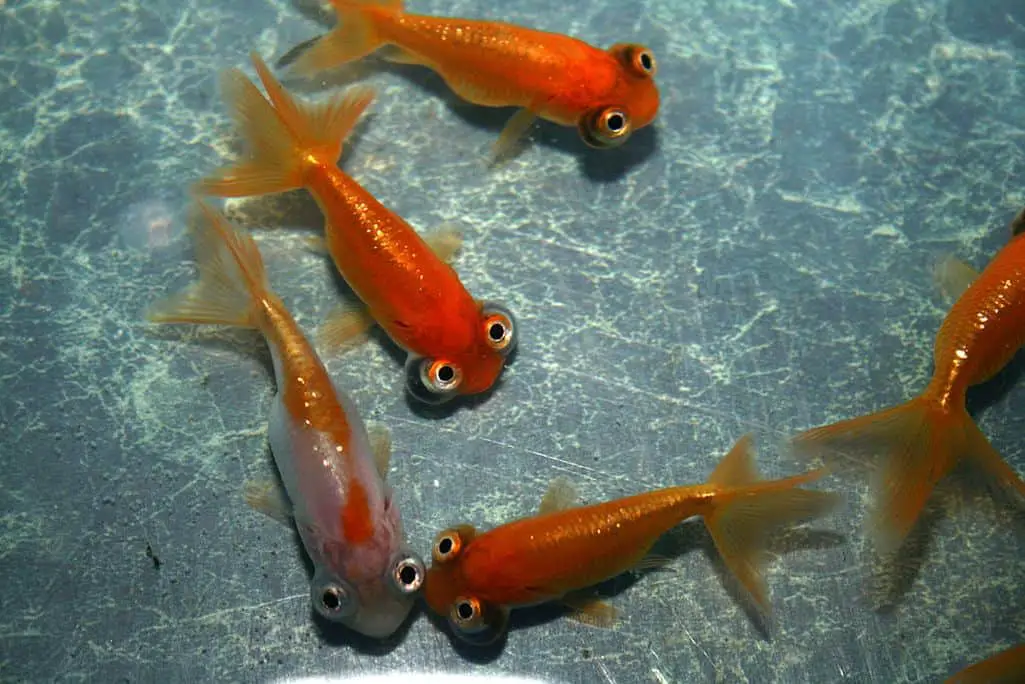
With a name like this you are probably hoping for something special, and the celestial goldfish does not disappoint.
This type of fancy goldfish is actually an offshoot of the telescopic goldfish I discussed earlier.
They are also easily identified by their eyes, but this time they look even stranger!
Celestial goldfish possess two greatly enlarged, upturned eyes, and a double-finned slender body. They can appear in a variety of color, but orange is the most common.
These do make very suitable tank mates for the black telescope, but you should be wary of introducing more species into the tank.
These are relatively fragile fish that need special care and attention.
Although they are agile swimmers, they have very limited vision due to genetic defects. This could cause them to bump into objects or other fish in a crowded aquarium.
Their eyes are also very delicate and liable to be damaged because of how they are orientated.
Water-Bubble Eye Goldfish
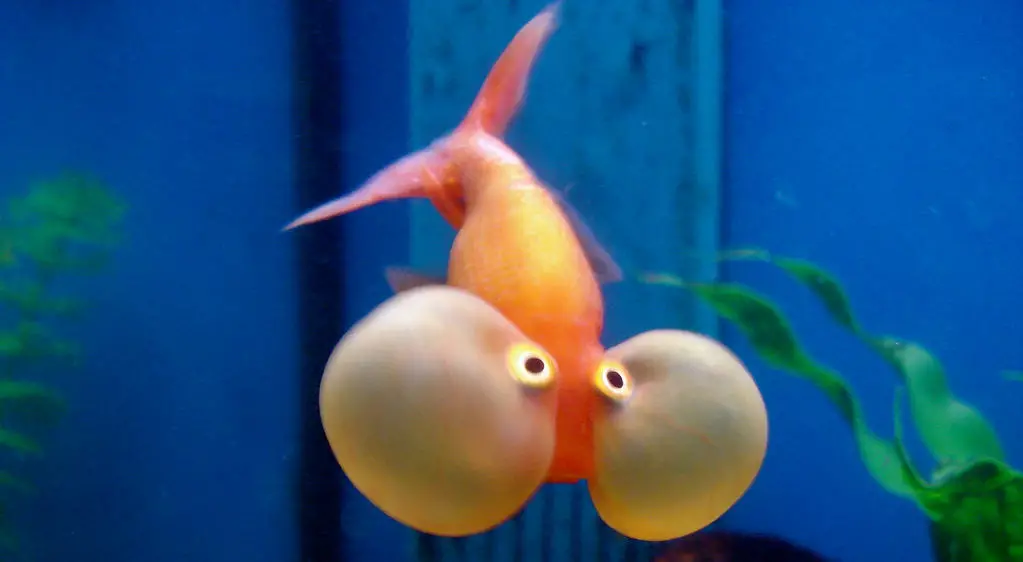
Continuing the trend of genetically eye-affected goldfish, the water bubble eye goldfish fits into the same category.
This may be the most unusual looking goldfish of them all. Like the celestial goldfish, it has two upturned eyes.
However, most distinctively, each eye has a large fluid filled sac attached to it.
Like the other breeds in this category, this fish is visually impaired. It is not a very strong swimmer, so it is not advised to keep it in an active tank with lots of nippy fish.
This fish needs space free from protrusions and potential obstacles!
It does make a peaceful tank mate for breeds like the black moor goldfish, and together they make quite a sight!
People will no doubt be impressed with your rare, genetically different goldfish specimens.
They should not be placed with aggressive fish as their eye sacs are fragile and liable to burst, which can cause them pain and start potential infections.
Mollies
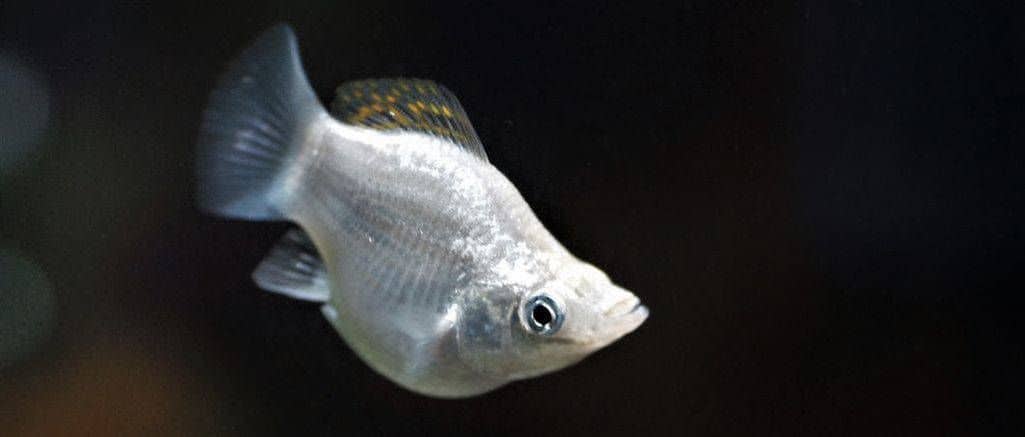
Taking a brief break from goldfish, you may want to consider introducing some Mollies into a community tank with black moor goldfish inhabitants.
Mollies are a freshwater fish that hail from the small streams and rivers of inland Mexico.
They are quite common, easy to find, and would provide a fitting contrast to the rarity and color of the black moor.
They have a metallic, silvery appearance and there are a number of different varieties available.
Members include the white Molly and the balloon molly, named for its deformed spine.
The Molly can be mildly aggressive in some circumstances, but it is unlikely to trouble a large, fully grown black moor goldfish.
However, you should provide some protection or cover for smaller fry, if you intend to breed goldfish in the tank.
Neon Tetras
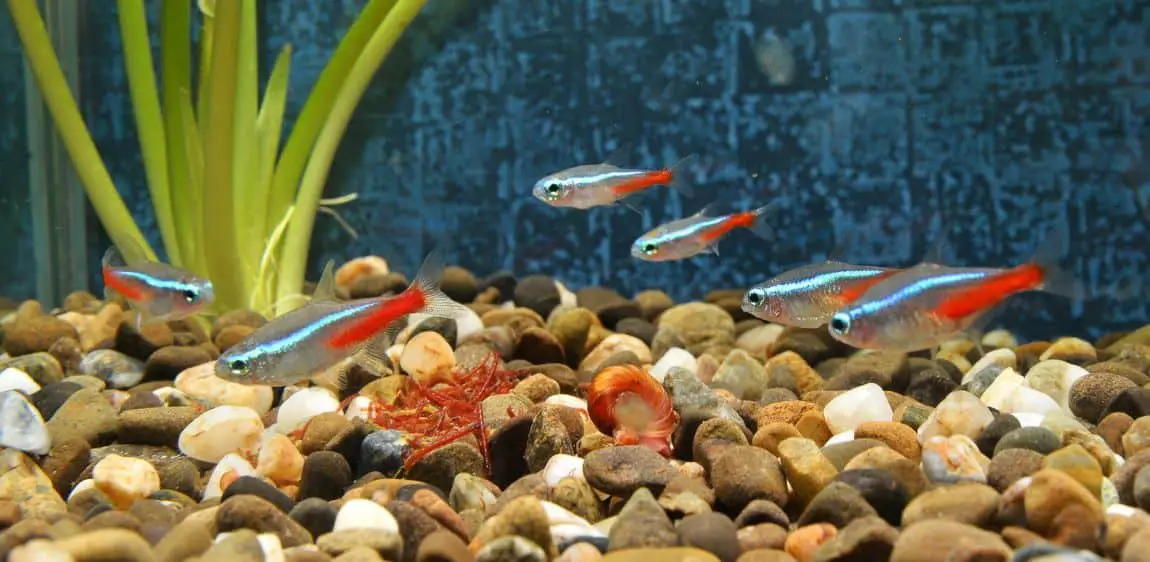
Neon tetras might not be the first variety that spring to mind, but they can actually be one of the best black moor goldfish tank mates that you can find.
Neon tetras are native to the waters of the Amazon basin in South America, but one of the reasons they are so ubiquitous in aquaculture is that they have adapted to a wide variety of conditions.
They can be kept in freshwater or brackish water conditions, wide a wide range of hardness and pH values, and will thrive so long as the water temperature is slightly elevated (21-27 deg.C).
They naturally tend to shoal, however they can be kept individually if you don’t have enough space for 6-10 tetras.
They make for very easily pleased tank mates. They are small enough to zip out of the way of slower moving black moor goldfish, they don’t compete for the same resources, and they can survive very healthily on plain flake food that can be easily sourced.
They are unlikely to cause your beloved goldfish much distress.
Cherry Barbs
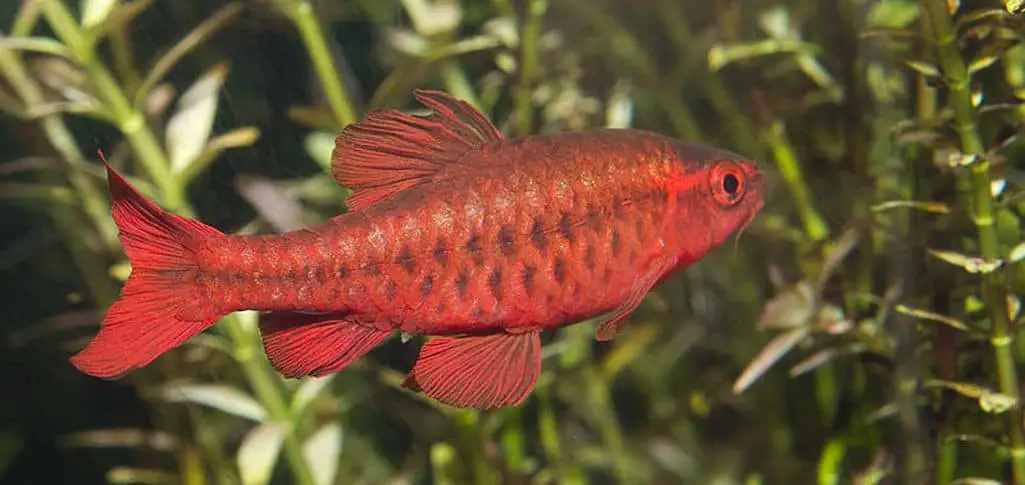
This is another mid-level feeder that can bring a real splash of color to your aquarium, especially if you complement it with contrasting black and white telescopes.
In fact, this fish is a playful little thing which is named for its bright, cheerful coloring.
It is small, both in the wild and in the tank. It will grow to a maximum of two inches and never loses its calm, tranquil temperament.
This is one of the things that makes it so suitable to a community tank setting.
It will happily mix with other freshwater fish, like the black moor telescope, and will school with other cherry barbs if they are present. This can help to really accentuate the coloring and make for a dazzling spectacle.
One thing to note is that this fish thrives best in heavily planted tanks that recreate the plant-lined waterways of Sri Lanka, where they come from.
On the other hand, black moor goldfish prefer clearer, obstacle free waters because of their limited vision.
You will need to achieve a balance here that works for both species, which may require some trial and error.
Zebra Danios

As you might expect, the zebra danio is named because of its striped appearance. This is a small, social fish that thrives in most community settings.
They are small enough to not cause any trouble, and hardy enough to evade most dangers themselves.
They come from busy freshwater settings so they are used to bustling waterways and will not be spooked by other tank residents.
They have a relatively ordinary appearance, which might not be as appealing as similar species such as the cheery barb.
They are very social, meaning they need a shoal to thrive. Otherwise their general health and well-being will be badly affected.
You will need to keep their activity under observation, as they can sometimes become hyperactive which may distress other fish like the black moor goldfish.
In this case a change of diet, environment or temperature may be called for.
Bristlenose Plecos

This is a resilient and hardy variety of catfish that can be a real aid to any community tank. As a general rule catfish do not cause great difficulties in a community setting.
They are bottom dwellers that are quite happy to keep their heads down in the lower levels of the tank and ignore anything going on above them.
They are larger than shoaling fish, and they do a valuable job at eating uneaten food that falls to the bottom and keeping algae growths under control.
Bristlenose plecos have the advantage of also being covered in bony plates. This serves like protective armor, which serves them very well in busy aquariums.
This protects them against any aggressive or semi-aggressive fish, as well as contact with any jagged rocks or sharp objects.
They make a wonderful, labor-saving, addition to an aquarium, essentially giving the tank another dimension.
Kuhli Loaches
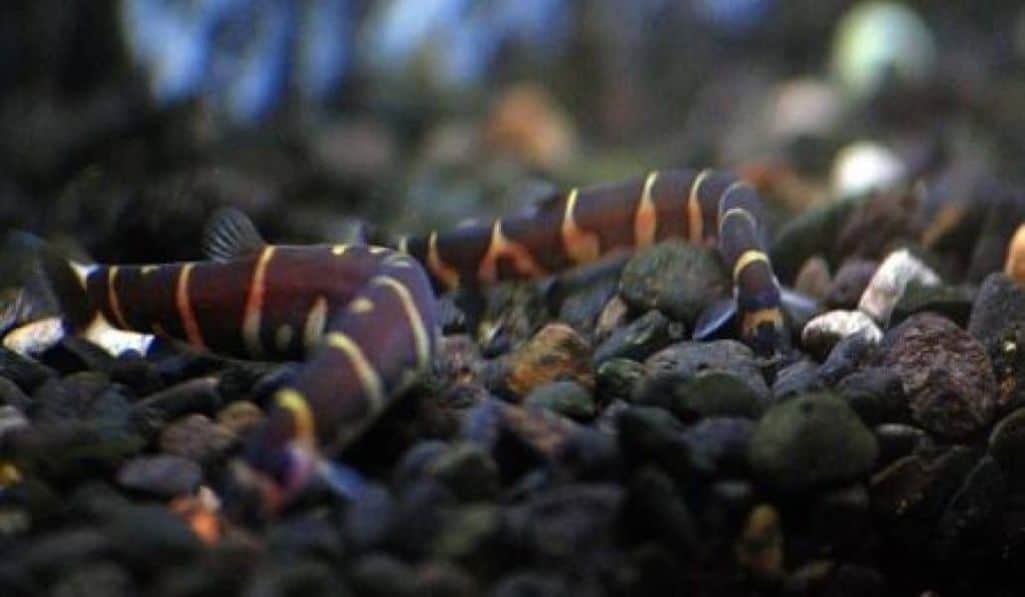
If you have a deadly fear of snakes, then you might want to keep clear of this breed.
The Kuhli loach has a distinctly snake -like or eel-like appearance, although they are often banded in attractive colors.
Most importantly, they are a peaceful fish with a gentle, loving temperament. They are naturally curious and will spend a lot of time exploring all the crags and crevices of your tank.
Like the plecos mentioned above, they are also scavengers who will spend a lot of time scouring the bottom of the tank for crumbs of food and nuggets of algae.
This means they don’t need much feeding, and they help to keep the ecosystem clean, clear, and free of annoying dirt.
They make for good tank mates in general, but they do prefer their water a bit on the acidic side.
Again, you will have to find a balance that suits all your tank inhabitants.
Otocinclus
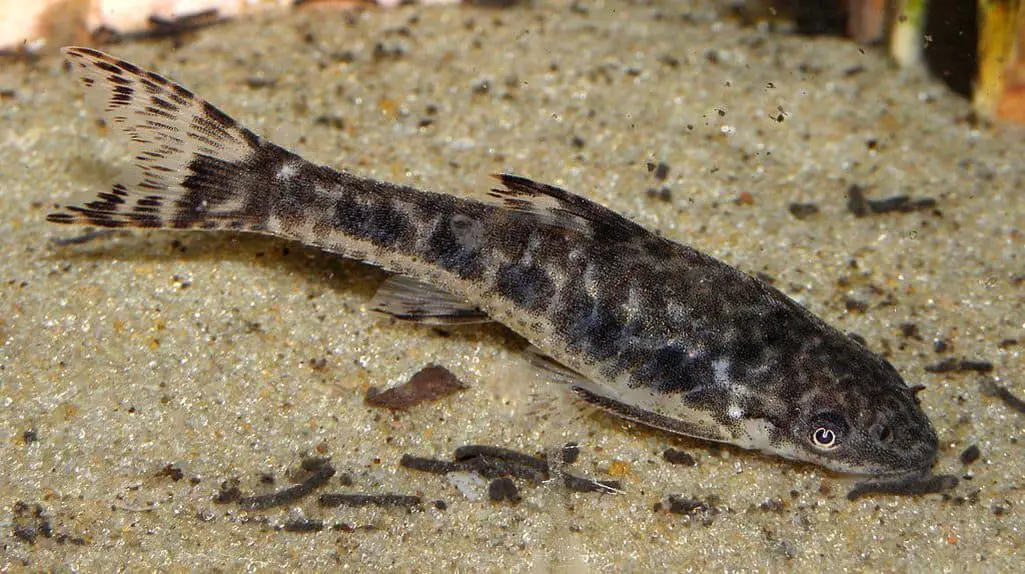
This is another genus of catfish that may be better known by the popular name of dwarf suckers.
They are so called because of their small stature, and sucker mouths that are convenient for bottom feeding along the banks and beds of rivers and streams.
Like other catfish species, they are peaceful and will happily nibble away at algae on the tank floor, without causing a nuisance to black moor goldfish above them.
Also, because they are so small, they will not consume much resources such as food or oxygen, leaving more for the larger goldfish and more active shoaling fish in the tank.
Glass Catfish
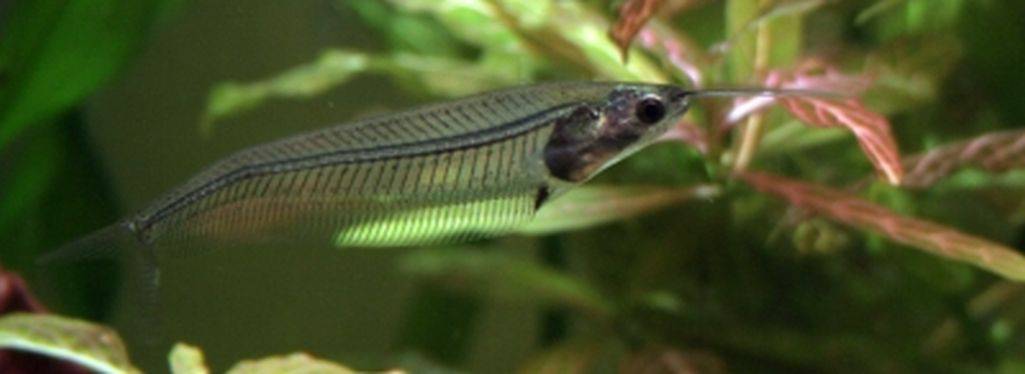
I round off this list of the best black moor goldfish tank mates with yet another type of catfish.
This catfish is also known as the ghost catfish because of its beguiling, translucent appearance. It seems to shimmer and almost disappear in the tank.
One of the most compelling features of this fish is that all their bones and organs are transparent, meaning you can see all their internals.
Other than their skeletal appearance, there are many more advantages to keeping this variety of fish as tank mates. These defy the expectations of most catfish.
They are very energetic creatures who will leave the confines of the bottom of the tank and actively explore the middle levels.
They also make for an amazing show when they school together.
They are naturally peaceable and will not show any aggression to other species, and thee will not be distressed by the presence of other fish either.
Community Tanks With Black Moor Goldfish
Black moor goldfish and other varieties of telescope goldfish can really be the jewel in the crown of a community tank.
However, unless you surround that jewel with the right environment and tank mates, it might not gleam and glimmer like you would want. That is why choosing the right tank mate is so important and deserves some thought and research.
Firstly, at the most basic level, tank mates most be able to survive and thrive in the same (or very similar) water conditions. This means you are restricted to freshwater fish.
What’s more, most fish will have an ideal range of pH values and hardness levels that they require, as well as a necessary level of oxygenation and filtration.
A black moor goldfish will do best in a neutral environment, with standard lighting, and a pH range of 6.5 to 7.5. It does well in water temperatures from 55-75 deg.F, and it tends to like moderately filtered environments.
You need to look for other specials whose require tank conditions match or overlap with these requirements.
Personalities are also important. The black moor is a friendly, peaceful goldfish so you want to match it with other similarly peaceable fish.
The worst thing you could do would be to introduce an aggressive fish that will nip at the goldfish and cause it distress, even if it is too small to do real damage.
You should also choose a fish that is used to a community setting, and is not put off by the hustle and bustle of a busy tank.
Make sure that your tank is big enough to host whatever tank mates you do choose to introduce.
Sufficient space, regular water changes, and adequate filtration will go a long way to making sure that your community tank thrives for a long time to come.
Conclusion
If you wanted to find the best black moor goldfish tank mates then you’ve just hit the jackpot. All of the fish on this list fulfill the criteria that was described for ideal tank companions.
They have suitably mild or peaceful temperaments, they have similar water condition needs, and they are used to active community tanks.
In fact, many of these species will thrive far better in a community setting than on their own. Before you invest in a tank mate, spend a bit or time getting your tank properly set up.
This means giving it a thorough clean, installing good-quality filtration equipment, cycling the water, and just generally making sure everything is spick and span for your new arrival.
When introducing a new fish into the tank it is best to do it as gradually as possible, especially if they are coming from different water conditions.
If you use this article properly, and make adequate preparations, then there is no reason why your black moor goldfish cannot have a new friend in their tank.
Community tanks can be a real point of interest in your home, especially if you create a friendly, tranquil environment for the inhabitants
Black Moor Goldfish Care (Black Telescope)




